Ranked as the third-largest state in the United States, California is geographically defined by the vast expanse of the Pacific Ocean to the west and contiguous borders with Oregon, Nevada, and Arizona. Additionally, it shares a southern border with Mexico. The acquisition of this territory from Mexico occurred in 1848, aligning closely with the present-day boundaries of California.
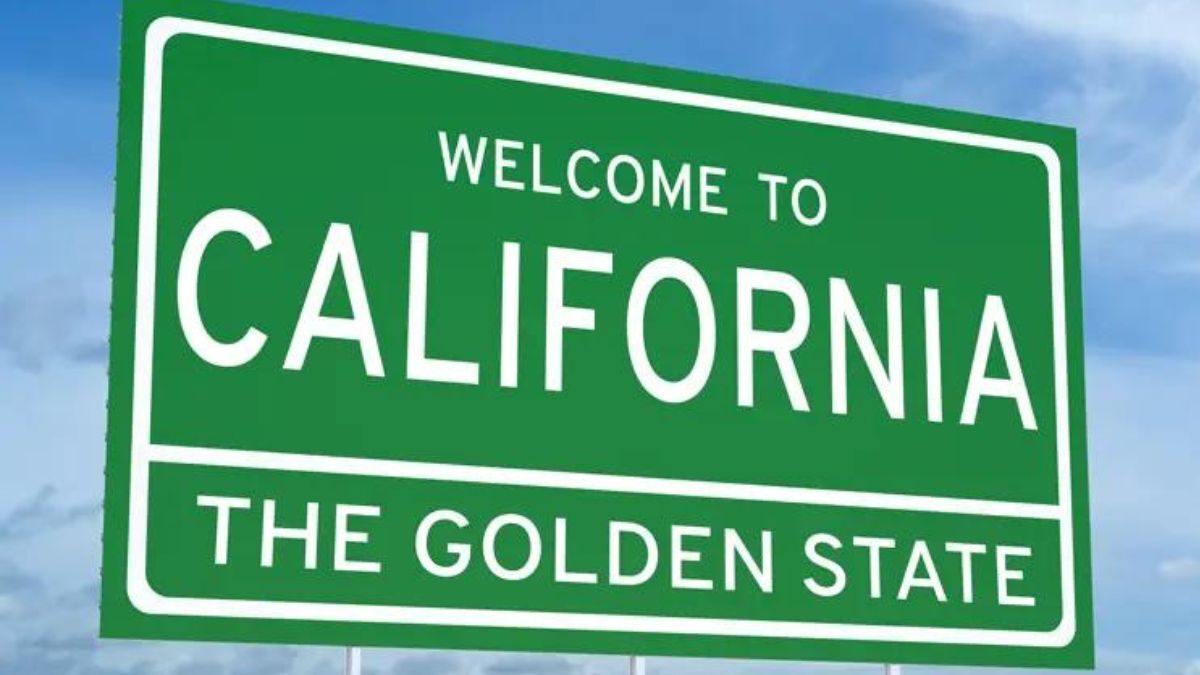
Frequently referred to as the 'Golden State,' California, unlike other regions, was never organized as a territory. Instead, from 1848 until achieving statehood, it was administered by a federal military authority. On the 9th of September 1850, California gained admission to the Union as the 31st state.
ALSO READ| Map of Florida (FL): Check Geographical Areas, Population, Cities and Towns
California State Map
The intricately detailed map illustrates the State of California, delineating its boundaries, the position of the state capital, Sacramento, prominent cities and populated areas, rivers, lakes, interstate highways, major highways, railroads, and significant airports.
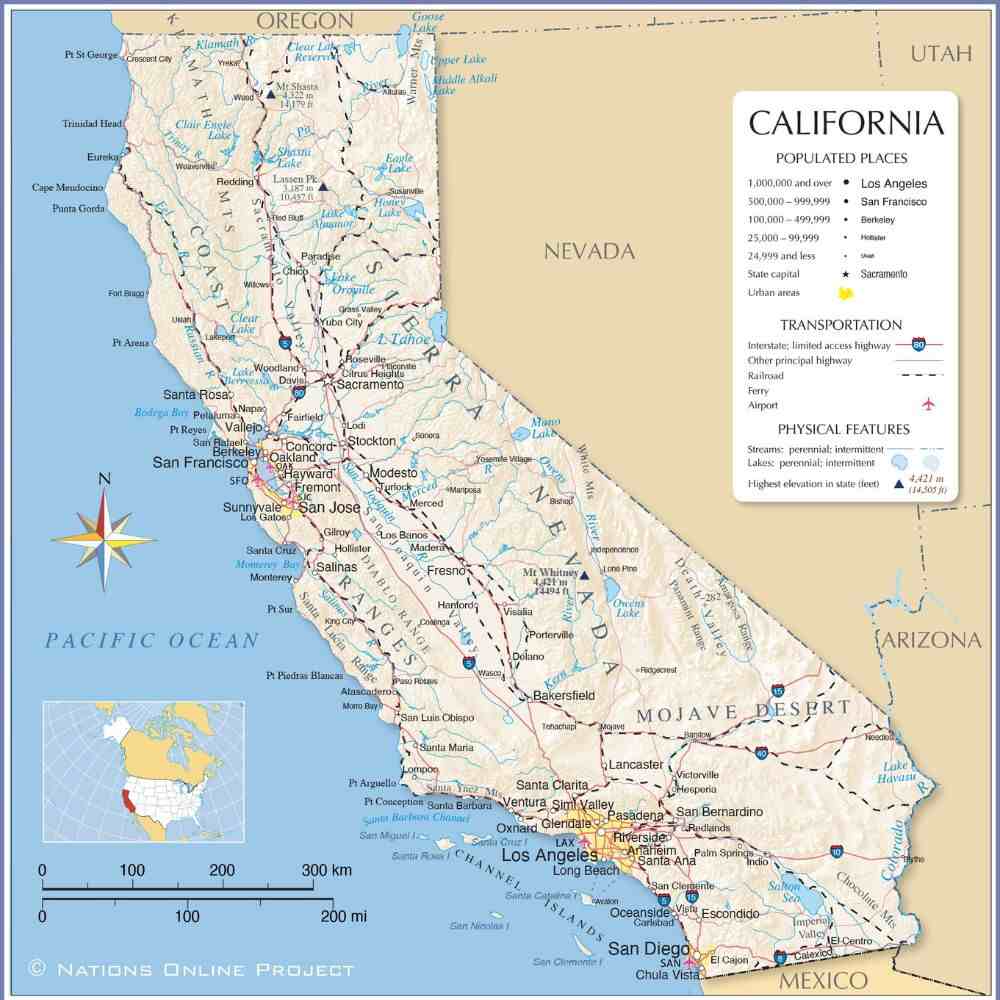
California Geographical Areas
Ranking as the third-largest state in the United States, California boasts an expansive area of 423,970 km². To provide a contextual perspective, the Golden State, as it is affectionately nicknamed, surpasses the size of Germany and is marginally smaller than Iraq. In a comparison within the U.S., California stands at a staggering 135 times the size of Rhode Island.
Distinguished by its vast expanse, the Golden State is characterized by four primary geographic regions:
1. The Coast
California boasts captivating geographical features, most notably its Pacific Ocean coastline spanning an impressive 1,350 km (840 mi). A significant portion of this coastal stretch is conveniently accessible via the scenic California State Route 1, renowned as the Pacific Coast Highway. This iconic roadway winds along some of California's most breathtaking seashores, establishing a picturesque link between the Greater Los Angeles Area and the San Francisco Bay Area.
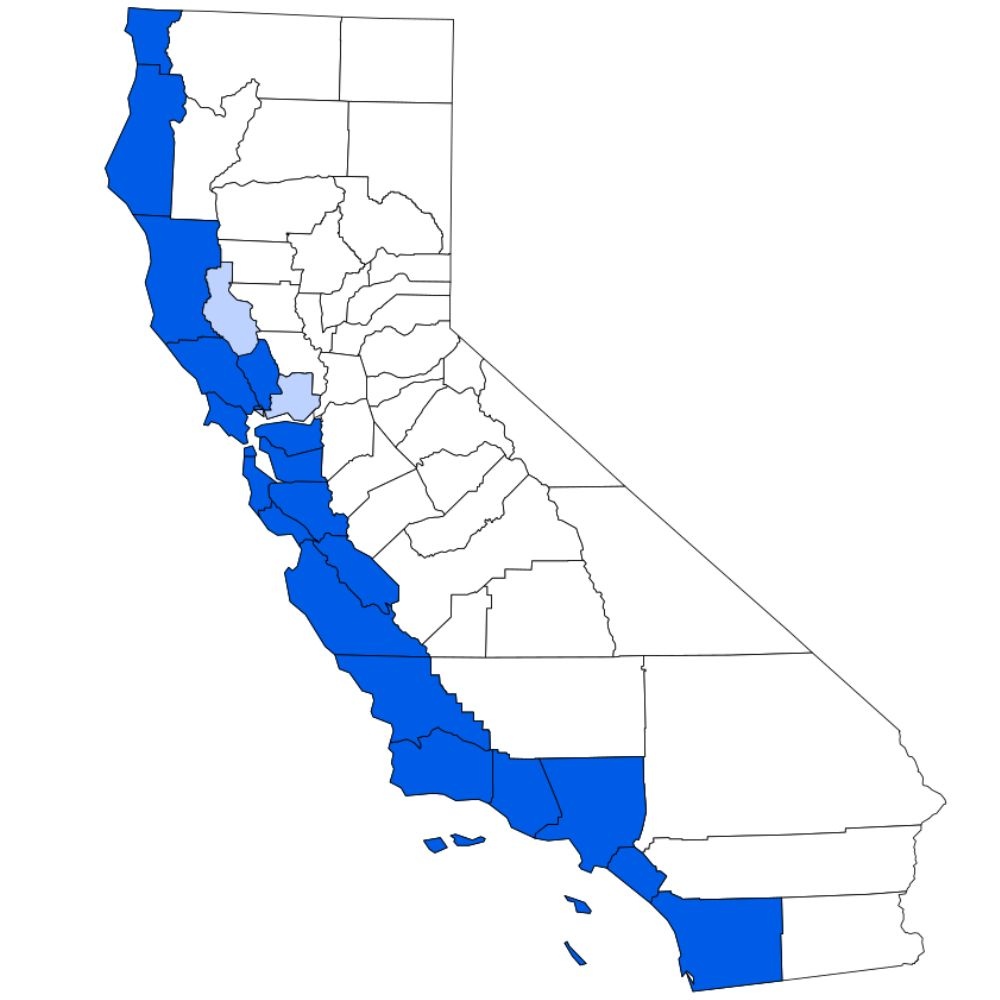
One of California's more notorious geological elements is the highly active San Andreas Fault zone, an integral part of the Pacific Ring of Fire. Functioning as a continental transform fault, the San Andreas Fault witnesses the dynamic interplay between the North American Plate and the Pacific Plate as they slide past each other. Extending for over 1,300 km, this fault line traverses the length of California. The ongoing tectonic movements along this fault hold the potential for "the next big one" – an earthquake measuring 7.0 magnitude or higher. Such an event could have a profoundly impactful and potentially devastating effect on urban centres throughout California.
ALSO READ| List of States in USA - Check How Many States in USA?
2. The Central Valley
Stretching along the centre of the state, the flat and fertile ‘Central Valley’ of California is subdivided into two distinct regions—the Sacramento Valley to the north and the San Joaquin Valley to the south. Recognized as the state's paramount agricultural hub, this expansive valley plays a pivotal role in California's agrarian landscape.
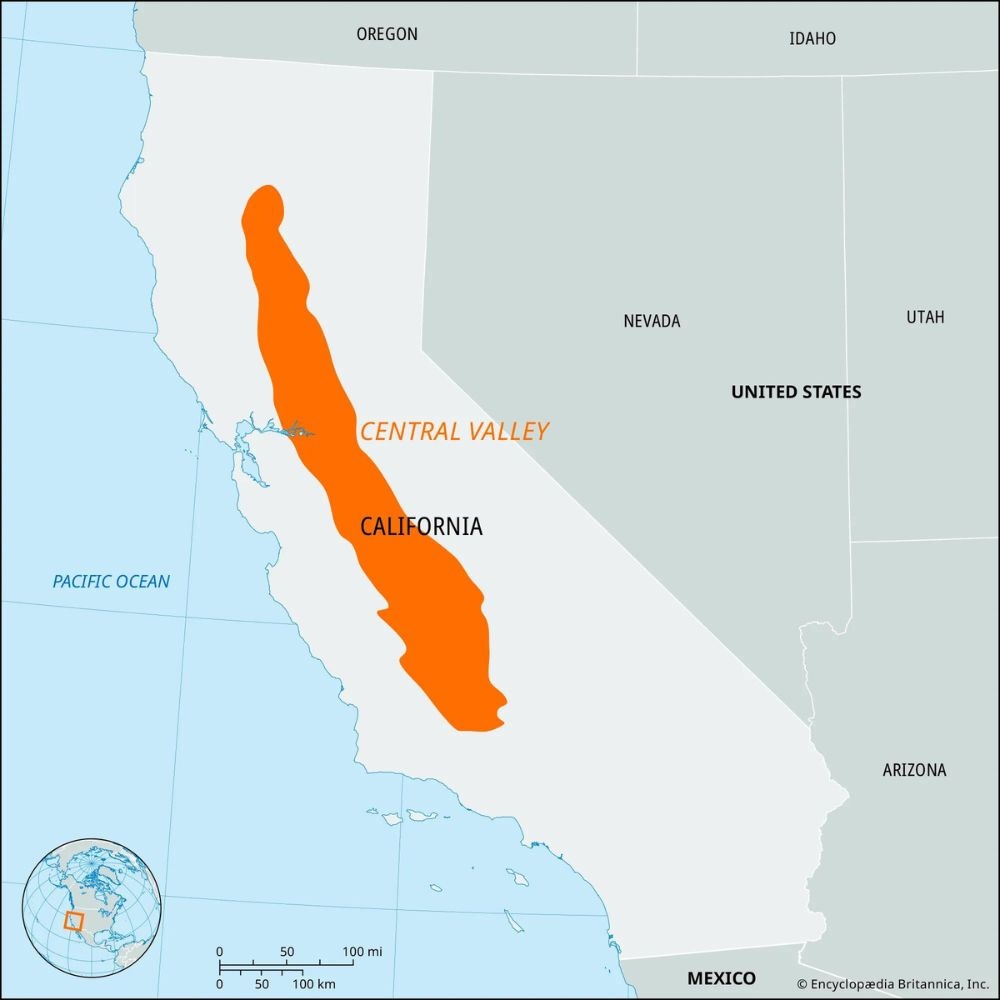
However, the prevalence of industrial agriculture and factory farming has left an indelible mark, precipitating significant alterations to the valley's habitats. The once pristine grasslands have succumbed to the encroachment of new species, while ponds and marshlands have been either drained or obliterated. To conserve some semblance of the valley's native grass habitat, California's state park, the Great Valley Grasslands State Park, diligently fulfils its role. This sanctuary serves as a repository, preserving examples of the region's original grassland environment. The major urban centres nestled within the valley include the state capital, Sacramento, along with Redding, Stockton, Modesto, Bakersfield, and Fresno.
3. The Mountains
California's mountainous terrain includes the spectacular Sierra Nevada, an expansive range stretching 640 km (400 mi) from north to south. Nestled within this majestic range is the renowned Lake Tahoe, a vast freshwater lake that stands as the second deepest in the United States. It also holds the distinction of being the largest alpine lake in North America, positioned at an elevation of 1,900 m above sea level.
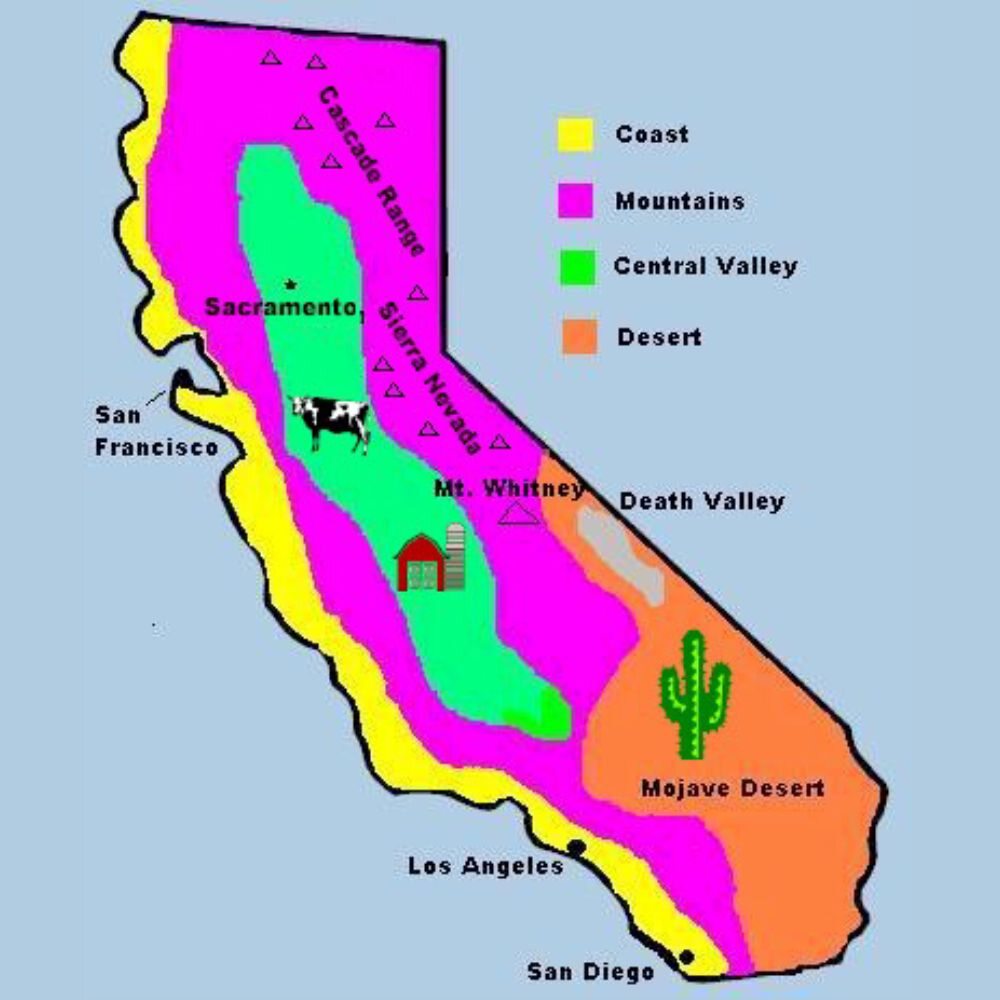
A notable feature within the Sierra Nevada is Mount Whitney, boasting the title of the highest mountain in the contiguous United States. Reaching an impressive altitude of 4,421 m (14,505 ft), Mount Whitney stands as a prominent peak in this formidable mountain range. Beyond the Sierra Nevada, California's mountainous allure extends to the Inyo Mountains, located near the desiccated Owens Lake. Additionally, the state hosts the Warner Mountains, an extensive mountain range stretching 85 miles from north to south in northeastern California.
4. The Desert
The Mojave Desert, an expansive arid expanse in southeastern California, stands as the driest region in all of North America. Encompassing a vast 35,000 km² desert basin, its borders are defined by the imposing Tehachapi Mountains, the San Gabriel Mountains, and the San Bernardino Mountains, effectively curtailing precipitation in the area.
This arid landscape derives its name from the tribal nation of the Mohave. Within the confines of the Mojave Desert lies the infamous Death Valley, a locale that clinches the record for the highest recorded air temperature on Earth, registering an astonishing 56.7°C (134°F).
ALSO READ| Largest State in the USA by Population
California Cities And Towns
Here is a complete list of cities and towns in California, USA:
| Cities/Towns | ||||
| Alturas | Escondido | Los Angeles | Porterville | Santa Maria |
| Anaheim | Eureka | Los Banos | Sacramento(C) | Santa Rosa |
| Atascadero | Fairfield | Los Gatos | Red Bluff | Simi Valley |
| Avalon | Fort Bragg | Madera | Redding | Sonora |
| Bakersfield | Fresno | Mariposa | Redlands | Stockton |
| Barstow | Gilroy | Merced | Ridgecrest | Sunnyvale |
| Bishop | Glendale | Modesto | Riverside | Susanville |
| Blythe | Grass Valley | Mojave | Roseville | Tehachapi |
| Calexico | Hanford | Monterey | Sacramento | Turlock |
| Carlsbad | Hesperia | Morro Bay | Salinas | Ukiah |
| Chico | Hollister | Napa | San Bernardino | Vallejo |
| Chula Vista | Independence | Needles | San Clemente | Ventura |
| Citrus Heights | Indio | Oceanside | San Diego | Victorville |
| Coalinga | King City | Oxnard | San Jose | Visalia |
| Crescent City | Lakeport | Palm Springs | San Luis Obispo | Vista |
| Daly City | Lancaster | Paradise | San Rafael | Wasco |
| Davis | Lodi | Pasadena | Santa Ana | Weaverville |
| Delano | Lompoc | Paso Robles | Santa Barbara | Weed |
| El Cajon | Lone Pine | Petaluma | Santa Clarita | Willows |
| El Centro | Long Beach | Placerville | Santa Cruz | Woodland |
| Yosemite Village | Yreka | Yuba City | ||
California World Heritage Site
California boasts not one but two UNESCO World Heritage Sites: the Redwood National and State Parks and the Yosemite National Park.
Situated along the northern California coastline, the Redwood National and State Parks inhabit a region of coastal mountains adorned with expansive forests of awe-inspiring giant redwood trees, scientifically known as Sequoia sempervirens. These colossal redwoods stand as the tallest and most remarkable tree species on Earth, creating a breathtaking natural landscape.
Moving inland, Yosemite National Park resides in the western Sierra Nevada, near the state border between California and Nevada. Renowned for its extraordinary biological diversity, the park is celebrated for its magnificent granite cliffs, profound narrow canyons, cascading waterfalls, pristine streams, and groves housing giant sequoia trees. Yosemite offers an abundance of natural features, including thousands of lakes and ponds, 1600 miles of streams, 800 miles of hiking trails, and 350 miles of roads, making it a haven for nature enthusiasts and a testament to California's ecological richness.
ALSO READ| List of Most Powerful Military Forces in the World 2024
California Population
California, with an estimated population of 39 million people as of July 2023 according to the Department of Finance, stands as the most populous state in the United States. The state capital is Sacramento, while the largest city is Los Angeles. Notable urban centres contributing to California's vibrant landscape include San Francisco, San Diego, San Jose, and Long Beach.
In terms of linguistic diversity, English prevails as the predominant language spoken by 60% of the population. Additionally, Spanish or Spanish Creole is spoken by a substantial segment, constituting 26% of the linguistic landscape in the state.
ALSO READ|
Comments
All Comments (0)
Join the conversation